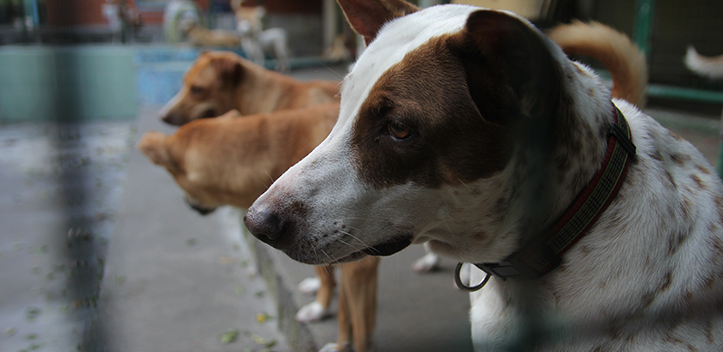Love in the Form of Aspins
In Partnership with:
SCROLL

The connection between man and his “best friend” is perhaps one of the purest and most universal forms of love. If any dog has been in your life, it’s easy to understand how this scruffy, eager creature is able to reach out and touch our hearts. With their unquestionable loyalty, service, and affection, it makes you wonder—do we even deserve dogs?
Indeed, man and dog have had a long history of companionship, dating back to when dogs were first domesticated for hunting thousands of years ago. Today, this companionship looks very different, having evolved into a dynamic of master and pet. Some dogs are even treated more like members of the family.
This long standing partnership is also diverse in form around the world, with a kind of “flagship” popular dog breed for every culture. The Japanese have the Shiba Inu; a popular exemplar of the breed is the ever-loyal Hachiko, beloved around the world. The English have the Corgi, a breed which the Queen herself kept at her side for many years. Then, there’s Mexico’s feisty little Chihuahuas, the fierce German Shepherds, and the majestic Border Collies running around the fields of New Zealand, among many others.
In the Philippines, many foreign dog breeds have settled and made it their home. It’s common to see breeds such as the Shih Tzu, Japanese Spitz, Retriever, Beagle, and Pug among Filipino households. But while these breeds are certainly popular choices for pets, there is no breed that represents us better than the common street dog… the native aspin.
Taking a look at the aspin -- derived from two Filipino words, "Aso" and "Pinoy" (Filipino Dogs)—you would probably think there’s nothing special about them. They’re small to medium in size, are shorthaired or rough in coat, with longer snouts and unremarkable colors and coats. Aspins are common street or watch dogs—in fact, prior to being called aspins, these dogs were formerly known as askals. The term askal is basically an amalgamation of two Filipino words "asong" and "kalye," meaning "street dog."
Since these Philippine native dogs literally flood the streets, they tend to be looked down upon. Due to the existing notion that foreign breeds are superior, aspins are not typically the first choice if you’re looking for a pet—if you come across an aspin in the streets, they’re more likely to be a stray. Many native dogs, in fact, end up in shelters, or become victims of animal abuse and cruelty. This is the discomforting reality of aspins in their own country. But with efforts to change existing perceptions of aspins, hopefully, the future of these dogs will see more open arms and open doors.
“'Yung mga kabayo, sinasakyan; 'yung mga kalabaw, kasama sa pag-aararo sa pagbubungkal ng lupa at noong araw din; 'yung mga aso natin katulong 'yan sa agrikultural na gawain. Alam mo bang mga aso noong araw ay nanghuhuli ng pugo, 'no?”
It’s difficult to pinpoint exactly where aspins’ ancestors originate, as they are a mixture of different breeds, but they have always played an important role in Filipino culture. According to Philippine Studies expert Prof. Jimmuel Naval, these dogs were actually used in pre-war agriculture in the country. “Domestic animal lovers tayong mga Pinoy. (We Filipinos are domestic animal lovers),” says Naval. “'Yung mga kabayo, sinasakyan; 'yung mga kalabaw, kasama sa pag-aararo sa pagbubungkal ng lupa at noong araw din; 'yung mga aso natin katulong 'yan sa agrikultural na gawain. Alam mo bang m ga aso noong araw ay nanghuhuli ng pugo, 'no? (The horses were used for riding; the carabaos helped us in plowing the fields; and even during those days, our dogs would join us in agricultural work. Did you know that these dogs were once used for hunting quails?)"
However, this began to change with the domestication of animals as pets in Filipino homes. According to Naval, this was influenced by Americans coming into the country and introducing foreign breeds. “‘Yung aso naging laruan, naging kasama sa bahay, binibihisan, so, parang anak, pinapakain ng pagkain (The dogs began to be treated like playthings, companions in the home, they were clothed, fed with human food),” Says Naval. “Parang anak (Like a child.)” Eventually, foreign breeds became the preference for pets and became something of a “status symbol.” “‘Pag mahal aso mo, iba ‘yung lifestyle niyo… Marahil may ganoong pagtingin. (If you own an expensive dog, it would say something about your lifestyle… There’s this kind of perception.)”
“Askal” was not really used as a term to collectively describe native dogs, but rather used to differentiate them from foreign breeds. According to Naval, it was common for people to call native dogs based on their appearance, spurring names such as “Tagpi,” “Brownie,” “Blackie,” “Whitey,” and “Bantay.”
More recently, the Philippine Animal Welfare Society (PAWS) suggested the name Aspin which was more socially acceptable, and to thus decrease the stigma associated with askal. According to Anna Cabrera, PAWS executive director, the root word kalye doesn’t evoke respect. It also suggests that dogs can survive on their own in the streets, a notion the organization wanted to change. Cabrera says that aspin is also a way to end the idea of putting a premium on purebred dogs, especially those specifically purebred in a certain country. Huskies, for example, are kinds of dogs people spend thousands of pesos on, even though the breed is used to cold weather. “But people can’t even spare a thought or spare some change for aspins.” She believes the name aspin would bring native dogs closer to Filipinos.
According to Naval, it was also a way to mark native dogs as truly Filipino. “Tinatakan natin ito ng pangalan para maging atin (We marked it with a name to call it our own).” He also suggests that aspin can have dual meaning—a mongrel dog (Canis lupis familaris), and owned by a Filipino.
We interviewed a family living out of a kariton around the area of P.Tuazon, Cubao, Quezon City; their livelihood earned through kalakal does not even suffice for their food on some days. Yet the man and woman together provide care for around 15 dogs—some of them sick or wounded.
The man began caring for dogs back in 2001, starting with a one aspin, “Si Gabbie, ‘yung una kong baby (Gabbie, my first baby).” The man says Gabbie was wounded when they got her. When they took Gabbie to the vet, he confirmed that Gabbie had been scalded with hot water. “Mabuti nga gumaling siya (It’s a good thing she got better.)”
The following year, he took on another dog, “Awoo.” “‘Pag meron siyang hinihiling, ‘Awoo’ ‘yung sinasabi niya (When he wants something, he cries out an ‘Awoo’),” he explains. The man gestures to another dog, “Ito naman, wala pang isang taon sa amin (This one has been with us almost a year),” he says. “Kaya ang gusto ko po ay mapagamot po ‘yan. (So what I want is for this one to get treatment).”
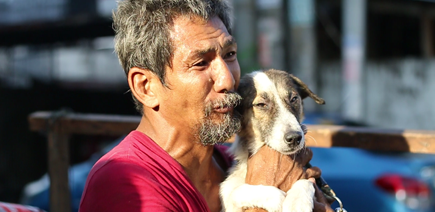
“Kahit saan kami pumunta, kasama namin po ‘yan—kahit po mainit o umulan. Parati namin kasama.”
The man and woman tell us stories of their other “babies,” some that unfortunately didn’t get proper care they needed. The man tells us of one dog that needed to be hospitalized. “Gagastos po ako ng limang libo. Sinabi ko po, wala akong ganung halaga (I needed to spend five thousand pesos. I told them I didn’t have enough).” The man says he told the dog, “‘Kung kaya mo pa, sige... May awa naman ang Diyos, tutulungan tayo.’ Kaya ayan pinagtitiyagaan niya ang leeg niya kahit hirap na hirap na siya. (‘If you can still take it, then let it be… God will have mercy on us.’ He endures the pain in his neck even if it’s hard on him).”
The woman then adds, “Bawal magtapon ng aso, kailangan mong alagaan hanggang gumaling. (You can’t just discard dogs, you have to stay with them until they get better).”
In spite of their living conditions, they never abandoned their dogs. “Kahit saan kami pumunta, kasama namin po ‘yan—kahit po mainit o umulan. Parati namin kasama. (Wherever we go, they come with us, no matter what weather. They’re always with us.)”
When asked whether they feel love from their aspin companions, the man says the dogs even sleep next to him every night. “Kaso po pag niyakap ko ito si Awoo, ayaw ni Gabbie magpatalo. Gusto niya siya lang hahawakan ko (When I hold Awoo, Gabbie gets mad. She wants to be the only one I hold.)”
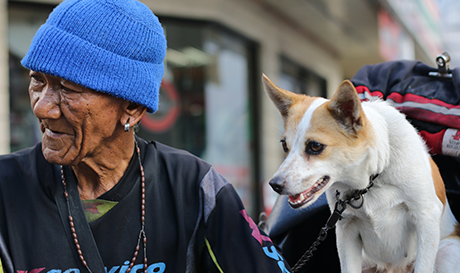
Though they are every bit as caring and lovable as foreign breeds, stigma surrounding aspins prevents them from being considered as potential pets. There is a tendency for people to choose imported breeds over native ones, because of the notion that owning an imported dog elevates one’s social standing. Some also breed dogs for profit. And in the same light, there is the idea that aspins are for the poor, reflecting the colonial mentality in our culture.
“Fashionization” of the dogs also comes into play. Breeds are treated almost as collectibles, and dogs are subjected to shows and competitions for the sake of human entertainment. There is a sense of misplaced prestige in owning a pretty dog, when the value should be seen in giving an animal care and its companionship in return.
Cabrera says there is a real disparity between aspins and purebred dogs. When the shelter at Philippine Animal Welfare Society (PAWS) was initiated, aspins never got adopted into families. Executive director Cabrera says that there was even a questioning mentality when it came to paying the adoption fees for aspins. Even in Filipino homes, the disparity was apparent. “Usually typical Filipino families would have two types of dogs,” she says. The purebred dog stays inside the home and eats commercial dog food. The native dogs is chained outside the house, and is fed leftovers.
Advocates such as Neal Cruz, who coined the phrase “adopt an animal and be at peace with your conscience” in his column, helped turn the tide for Caspins. In 2007, PAWS also came up with their own campaign, “See beauty beyond breed,” and an aspin club in 2010. They also encouraged aspin appreciation through special prizes for aspins in events and such initiatives.
Today, aspins are growing more and more prevalent in fundraising events, Cabrera says. She also notes that the term aspin has caught on nicely—an important step in solving the disparity.
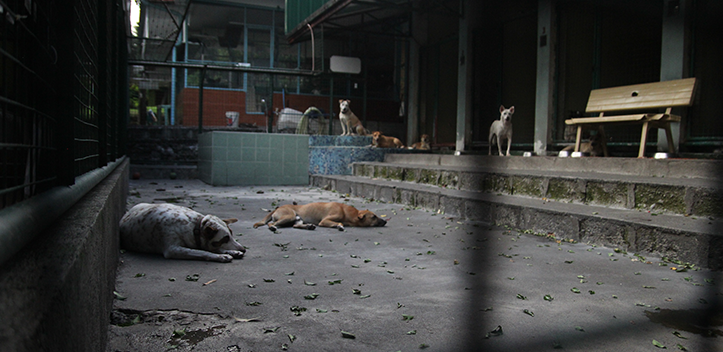
"PAWS lobbied for the Animal Welfare Act for 13 years. We really had a difficult time because the senators would make fun of it, telling us that the dog meat trade is a culture. But in 1998, we were able to successfully had it passed—the Animal Welfare Act 8485."
The sad reality, though, is that 95% of animal cruelty case victims are aspins. With the alarming number of cases, PAWS perceived the need for an anti-cruelty law that would stamp out animal abuse in the country. Internationally-acclaimed environmentalist and PAWS president Nita Hontiveros-Lichauco lobbied for the first Animal Welfare Act in 1998. Cabrera mentions that the Philippines is the first in Southeast Asia to actually have an Animal Welfare Act, "PAWS lobbied for the Animal Welfare Act for 13 years. We really had a difficult time because the senators would make fun of it, telling us that the dog meat trade is a culture. But in 1998, we were able to successfully had it passed—the Animal Welfare Act 8485."
Cabrera further explains that in 2013—with the help of their volunteer lawyers—they were able to lobby again for the amendment of Animal Welfare Act, "In the amended law, nag-increase na ng penalty. Dati ang maximum penalty lang ng violation of Animal Welfare Act was P5,000, ngayon is P100,000. (The penalty increased in the amended law, the maximum penalty for violation against Animal Welfare Act was P5,000, but now it's P100,000)."
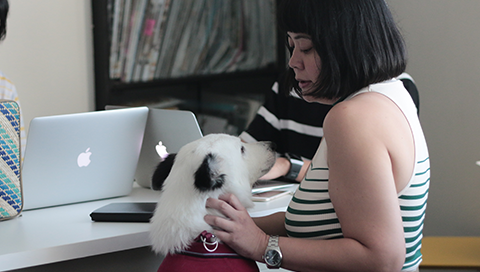
“Dogs teach humans to be more empathic, caring, and kind, because they themselves are creatures who love unconditionally,”
Bea is the proud pet parent of George, whom she says is very special. A dog lover who has been adopting aspins since she was in high school, Bea has had George for five years and instantly knew he’d be her best friend the moment he came to her home. “All dogs are loving creatures, but George is a funny, caring, sweet dog. He’s got such a funny sense of humor and he’s incredibly photogenic.”
George is also an office dog who roams freely and even joins meetings with Bea. He has been featured across many of Hinge Inquirer Publications’ magazines and has been in many fashion editorials.
Bea recounts that when people are shocked to find out that George is an aspin—telling her ”but he’s so cute!”—she would say, “You’re not a horrible looking person, are you a purebred?” For her, it’s strange for people to think a dog can’t be cute just because he’s a native dog. Aspins, she says, are equally loving, adorable, and smart as purebreds.
She believes in “adopt don’t shop,” stressing that there are so many aspins “looking for loving and caring homes,” and also that some breeder practices are actually inhumane. Bea recognizes that all dogs are special and says she has nothing against purebreds. But knowing that there are dogs out there who need a loving and caring home, she doesn’t see the point in seeking out or buying purebred dogs.
Having other people interact with George is her way of helping erase the stigma, because for her, he is “the perfect example of what a dog can be.” “Dogs teach humans to be more empathic, caring, and kind, because they themselves are creatures who love unconditionally,” she adds.
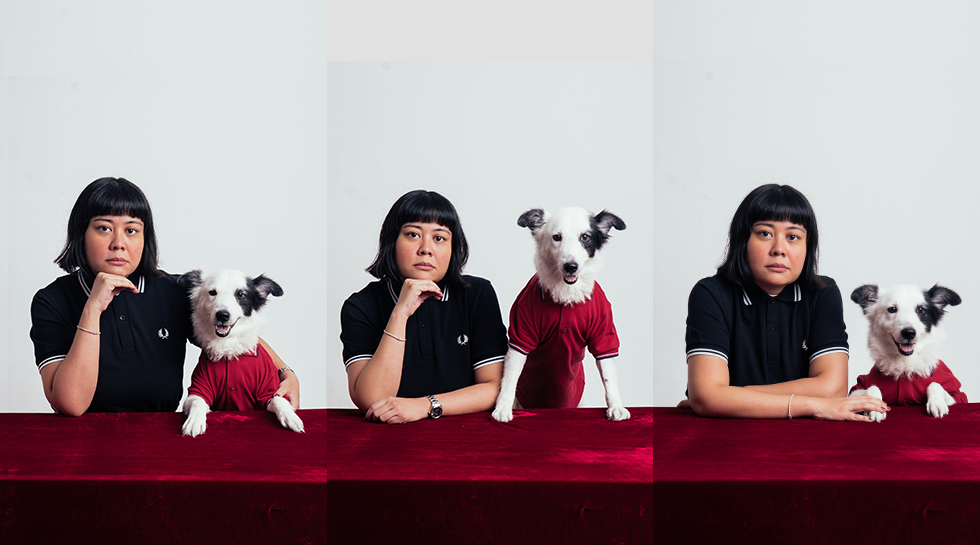
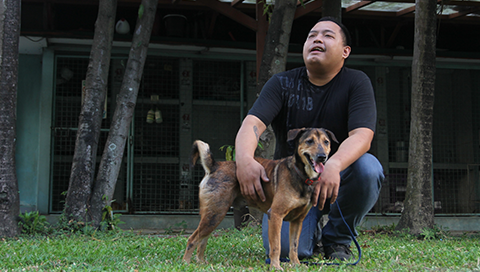
“If we try to show compassion, try natin bigyan sila ng pagkain once in a while, try natin sila bigyan ng tubig kapag nauuhaw sila. Doon mo makikita na kahit pala hindi Labrador 'tong aso na 'to, mabait pa rin naman sila. Sabi ko nga, a dog is a dog regardless of its breed.”
At present, John has 15 dogs—4 of which are aspins. Having had aspins in his home since he was a child, John believes aspins are most convenient to adopt because a lot of them are in need of rescue.
As an animal behaviorist, John shares that when interacting with a traumatized dog, it's important to figure out first the cause of such behavior, "Observe them for a while, let them get used to a person and then we try to interact with them."
While some people assume that aspins are difficult to deal with because of their appearance, he points out that the misconception always comes from our inability to empathize, "The misconception is we don’t try. If we try to show compassion, try natin bigyan sila ng pagkain once in a while, try natin sila bigyan ng tubig kapag nauuhaw sila. Doon mo makikita na kahit pala hindi Labrador 'tong aso na 'to, mabait pa rin naman sila. Sabi ko nga, a dog is a dog regardless of its breed. (The misconception is we don't try. Once in a while, let's try to give them food, give them water when they're thirsty. From there, you'll realize that even though that dog is not a Labrador, it can still be as lovable. So just like what I said, a dog is a dog regardless of its breed.)"
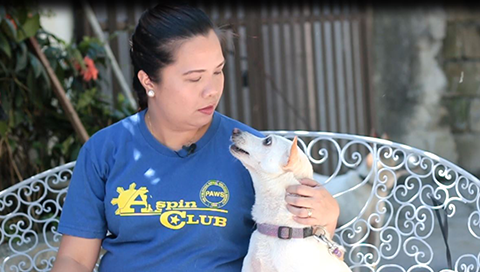
“Kung tini-treat natin yung aspins the way na tini-treat natin yung purebreds natin—ite-train natin sila, bibigyan natin sila ng time the way na we give time and training dun sa mga nakikita natin na purebreds. Kaya rin naman nilang pantayan kung hindi, higitan pa.”
Sharon is the “mom” of thirteen-year-old Tiny. With several dogs at home, both purebreds and aspins, Sharon grew up believing that native dog was a breed. She believes that PAWS’ initiative to call native dogs aspin instead of askal was an important move to avoid discrimination. “Ang sad lang, kasi lagin tayong nagco-complain na nadi-discriminate tayo, when tayo mismo yung native dogs natin dini-discriminate natin (It’s just sad, we’re used to complaining that we’re always discriminated against, but we ourselves discriminate against our native dogs).” She compares the aspin to us Filipinos—”Parang tayong Pinoy, mixed breeds na rin tayo because ‘yung history natin, ganoon rin sila (Us Filipinos, we’re mixed breeds because of our history, just like them).”
According to Sharon, she believes there are no bad dogs, only neglectful owners. “Kung tini-treat natin yung aspins the way na tini-treat natin yung purebreds natin—ite-train natin sila, bibigyan natin sila ng time the way na we give time and training dun sa mga nakikita natin na purebreds. Kaya rin naman nilang pantayan kung hindi, higitan pa. (If we only treated aspins the way we treat purebreds—we can train them, give them enough time, the same way we would for purebreds. Aspins can level with their purebred counterparts, if not, exceed our expectations.).”
All dogs deserve love, but love comes a little harder for aspins. Opening your home to them, you’ll have a lot to gain—unconditional love, security, and companionship—but for aspins, they have everything to gain.
Aspins also reflect us Filipinos in more ways than we realize. Truly knowing this native dog’s value has a lot to do with understanding our own complex culture and past. Aside from the love and loyalty that dogs teach us, aspins also teach us to love our own.
Go beyond your own home, and help erase the stigma for aspins. Only then can askal become obsolete—only then can we truly get these dogs off the streets.
